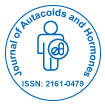Research Article
Primitive Stem Cells are Present in the Blood of Adult Equines and Increase with Moderate Exercise or Ingestion of the Cyanobacter, Aphanizomenon Flos-Aquae
| George W McCommon1 , Frank Lochner2 , Asa C Black Jr3 and Henry E Young4 * | ||
| 1Department of Veterinary Sciences, Fort Valley State University, Fort Valley, GA, 31030, USA | ||
| 2Cougar Creek Farms, Fort Valley, GA, 31030, USA | ||
| 3Department of Basic Medical Sciences, Memorial General Hospital - University of South Carolina Medical School, Greenville, SC 29605, USA | ||
| 4Regeneration Technologies, Macon, GA 31201, USA | ||
| Corresponding Author : | Henry E Young, PhD Regeneration Technologies Corporation 778-B Mulberry Street, Macon, GA 31201, USA Tel: 478-319-1983 E-mail: young.hey1@yahoo.com |
|
| Received February 16, 2013; Accepted July 17, 2013; Published July 19, 2013 | ||
| Citation: Common GWM, Lochner F, Black Jr AC, Youn HE (2013) Primitive Stem Cells are Present in the Blood of Adult Equines and Increase with Moderate Exercise or Ingestion of the Cyanobacter, Aphanizomenon Flos-Aquae. Autacoids 2:103. doi: 10.4172/2161-0479.1000103 | ||
| Copyright: © 2013 Common GWM, et al. This is an open-access article distributed under the terms of the Creative Commons Attribution License, which permits unrestricted use, distribution, and reproduction in any medium, provided the original author and source are credited. | ||
Related article at Pubmed Pubmed  Scholar Google Scholar Google |
||
Abstract
Primitive stem cells have been discovered within the blood of adult mammals such as rodents, porcines, and humans. The current study addressed the issue of primitive stem cells in the blood of adult equines. Blood withdrawal by venipuncture from adult equines was performed following the guidelines of Fort Valley State University IACUC. Ten horses were used in this study: one Danish Oldenburg, three Standard breds and six Quarter Horses with age ranges of 5 – 20 years. The blood was processed for stem cell isolation and counting. All horses examined were noted to have circulating levels of primitive stem cells in their blood. Standard breds showed an increase of stem cell number with increasing age of the animals. In contrast, Quarter Horses showed an increase in stem cell number that paralleled an increase in the level of stress to the animal, regardless of age. All horses showed an increase in stem cell number in their blood after moderate exercise (10 minutes of cantering) and at time periods after ingestion of Aphanizomenon flos-aquae. These studies demonstrate the existence of primitive stem cells within adult equine blood. Larger sample sizes are needed to determine the significance of the effects of age, stress, trauma and ingested compounds on the number of circulating primitive adult stem cells in the blood of adult horses. Further studies are also needed to assess the applicability of using circulating primitive stem cells for the restoration and/or repair of tissues in the adult equine damaged by trauma or disease.

 Spanish
Spanish  Chinese
Chinese  Russian
Russian  German
German  French
French  Japanese
Japanese  Portuguese
Portuguese  Hindi
Hindi